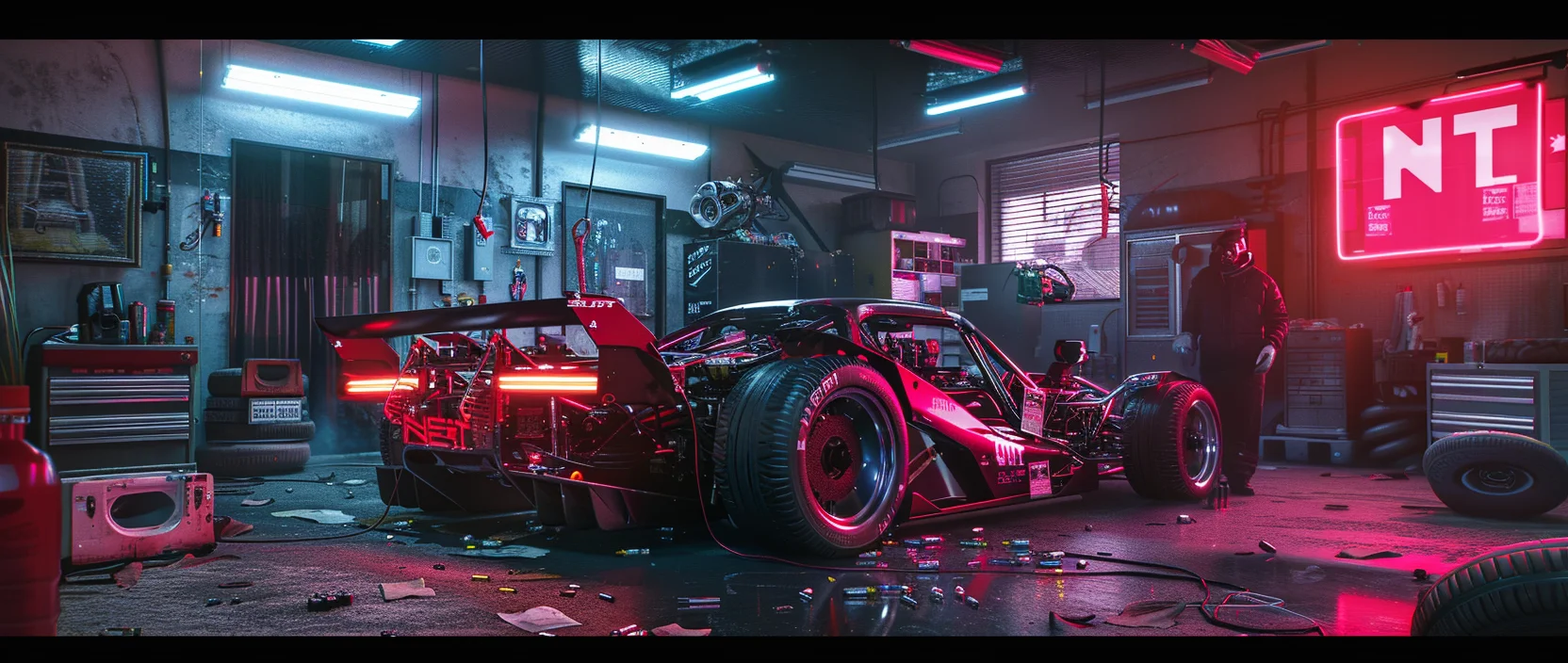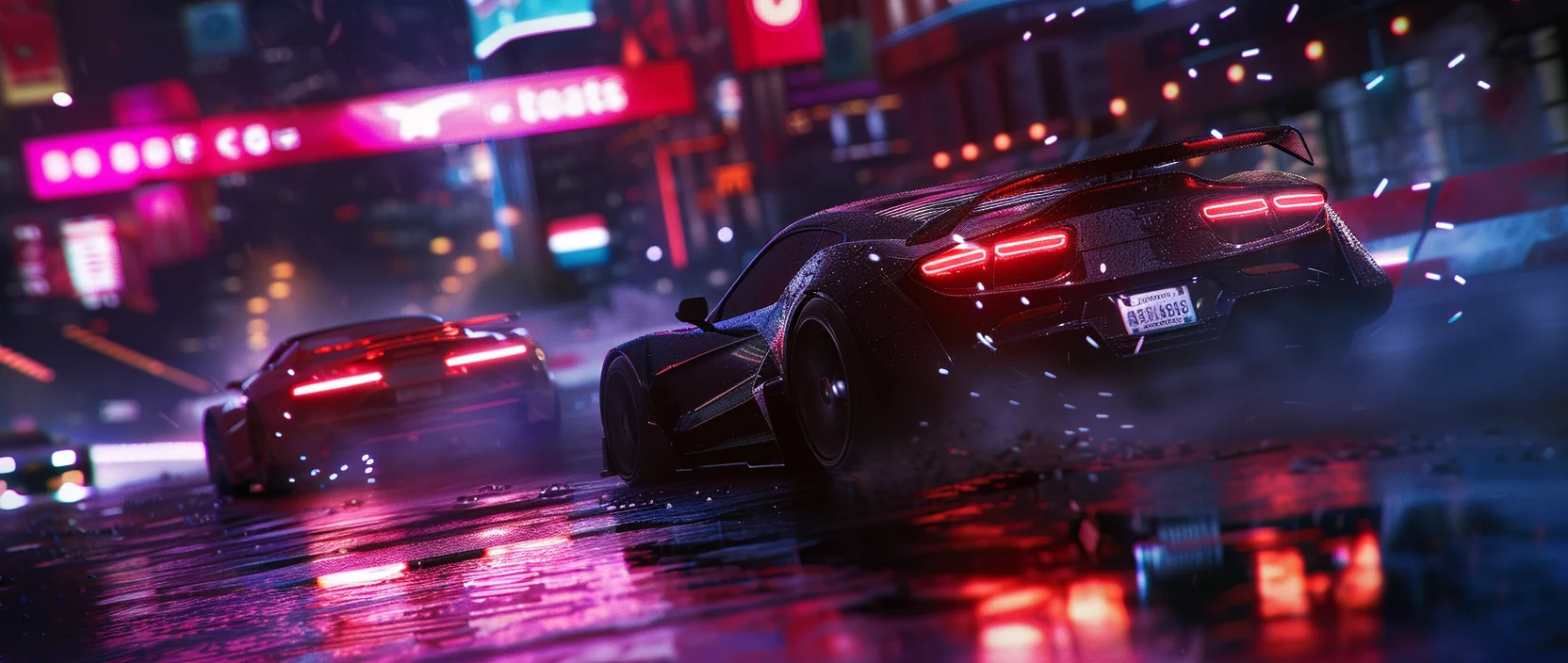Rush Racing 2 is a real-time multiplayer drag racing game infused with blockchain and NFT elements, where players compete for cars, in-game currency, and tokens. The game combines speed, strategy, and digital assets with real value — from high-stakes pink slip races to customizing your garage and participating in the blockchain economy. In this guide, you’ll find all key aspects of the project: from gameplay and monetization to its technical architecture and long-term prospects.
Contents:
- What is Rush Racing 2?
- Gameplay and Core Features
- Blockchain Ecosystem and Tokens
- Technical Documentation and Smart Contracts
- Community and Platforms
- Pros and Cons of Rush Racing 2
- Conclusion

1. What is Rush Racing 2?
Rush Racing 2 is a mobile and browser-based drag racing game with both PvP and PvE modes. Players can bet real in-game cars in high-stakes “pink slip” races and take part in team-based competitions known as Crew Hangouts. Since its initial release in 2019–2020, the game has attracted over 7 million players.
The core gameplay revolves around drag racing, where precision timing, smart car tuning, and perfect gear shifts determine the outcome. The game offers an extensive customization system, enabling players to adjust their vehicles to match personal racing styles and preferences.
Blockchain integration and the RRS token bring real economic value to in-game assets, turning the experience into more than just a race — it becomes part of a larger Web3 economy.
2. Gameplay and Core Features
Rush Racing 2 delivers a multi-layered gameplay experience that evolves as players progress. The project blends arcade dynamics, strategic elements, and simulation-level depth, encouraging players to make impactful decisions both on and off the track.
Key gameplay features include:
- Pink Slip Racing: Race for ownership — the loser forfeits their car, making this the most intense and high-risk mode in the game.
- Campaign and PvP: A six-stage career mode featuring reward vehicles, alongside live multiplayer races with in-game currency and vehicle betting.
- Daily Tournaments and Championships: Includes events like Daily Battle, Championship of Racers, and Crew Hangouts with bots and real opponents.
- Car Tuning and Modifications: Over 18,000 modification combinations — from nitro systems to engine upgrades and cosmetic changes.
- Garage Crates: Players unlock bronze, silver, and gold-level crates filled with parts, bonuses, and in-game rewards.
Each mode unlocks different opportunities, from gradual progression to high-risk PvP challenges with real rewards. Players can focus on climbing the ranks, optimizing vehicles, or engaging in the Web3 token economy. This depth and variety turn Rush Racing 2 into a competitive and immersive experience beyond simple drag racing.
3. Blockchain Ecosystem and Tokens
Rush Racing 2 integrates Web3 capabilities with the RRS token as the cornerstone of its economy. Built on the Blast Sepolia blockchain, the token system empowers users with meaningful utility and ownership of in-game assets. RRS bridges gameplay with value-driven interaction, enhancing the play-to-earn model.
The RRS token can be used for:
- Reducing tuning cooldowns by 30 minutes;
- Unlocking exclusive items and premium garages;
- Exporting vehicles as NFTs for external ownership or trade;
- Deposits and withdrawals (with ~10% fee) via secure 2FA authorization.
RRS serves as an internal utility and reward mechanism. It accelerates progress, grants access to rare features, and can be earned in various game modes. The system encourages active engagement while linking player performance to tangible value, reinforcing the core Web3 philosophy of digital asset ownership.
4. Technical Documentation and Smart Contracts
Beyond gameplay, Rush Racing 2 provides a solid technical foundation for blockchain integration. The RRS token’s smart contract is deployed on the Blast Sepolia network at the address 0x90a5...9F24. Players can connect their MetaMask wallets via the official Telegram bot (@rushracing2_bot) to manage tokens, NFTs, deposits, and withdrawals, all secured through two-factor authentication.
The game runs on the Unity engine and leverages a middleware layer called Trackhub — a custom-built platform that ensures smooth and secure communication between the blockchain and the gameplay environment. This architecture enables near-instant synchronization of assets and transactions while maintaining performance and security standards.

5. Community and Platforms
The Rush Racing 2 community is active across multiple platforms and plays a vital role in the game's ecosystem. On X (formerly Twitter), the official account @rr2game shares updates, news, and community discussions. The project’s Facebook page outlines its vision of transitioning to a DAO, encouraging players to participate in governance and development.
The Telegram bot acts not only as a technical gateway but also as a central hub for onboarding and interaction. Additionally, the game is featured on platforms like ChainPlay.gg, which track token metrics and NFT activity related to Rush Racing 2.
Community members actively share car builds, discuss racing strategies, collaborate in team events, and provide feedback. This two-way communication fosters a dynamic ecosystem where developers and players build the game's future together.
6. Pros and Cons of Rush Racing 2
Rush Racing 2 combines a number of strong features that make it appealing to fans of Web3 gaming. However, like any project, it also comes with certain limitations. The table below summarizes the key pros and cons of the game:
| Pros | Cons |
|---|---|
| Engaging PvP with high-stakes racing | Deposit/withdrawal fee of around 10% |
| Extensive customization — over 18,000 options | Risk of losing vehicles in pink slip races |
| Strong blockchain and NFT integration | Reliant on blockchain stability and gas fees |
| Multiple gameplay modes and progression paths | Smaller audience compared to mainstream racing games |
Rush Racing 2 is built for those who enjoy competitive PvP, vehicle tuning, and participating in a digital economy. If you’re new to blockchain gaming, start with the Gameplay section. For more technical users, the Smart Contract section provides integration details.
7. Conclusion
Rush Racing 2 combines fast-paced drag racing with blockchain economics to create a unique gaming experience. With its diverse modes, rich customization, and token utility, it offers more than entertainment — it enables true ownership of in-game assets and rewards active participation.
That said, mechanics like pink slip wagering and transaction fees require a mindful and strategic approach. This is not just an arcade racer, but a competitive ecosystem where decisions carry weight and consequence.
For players seeking high-stakes PvP, deep customization, and integration into a digital asset economy, Rush Racing 2 presents a compelling and forward-thinking Web3 playground.




